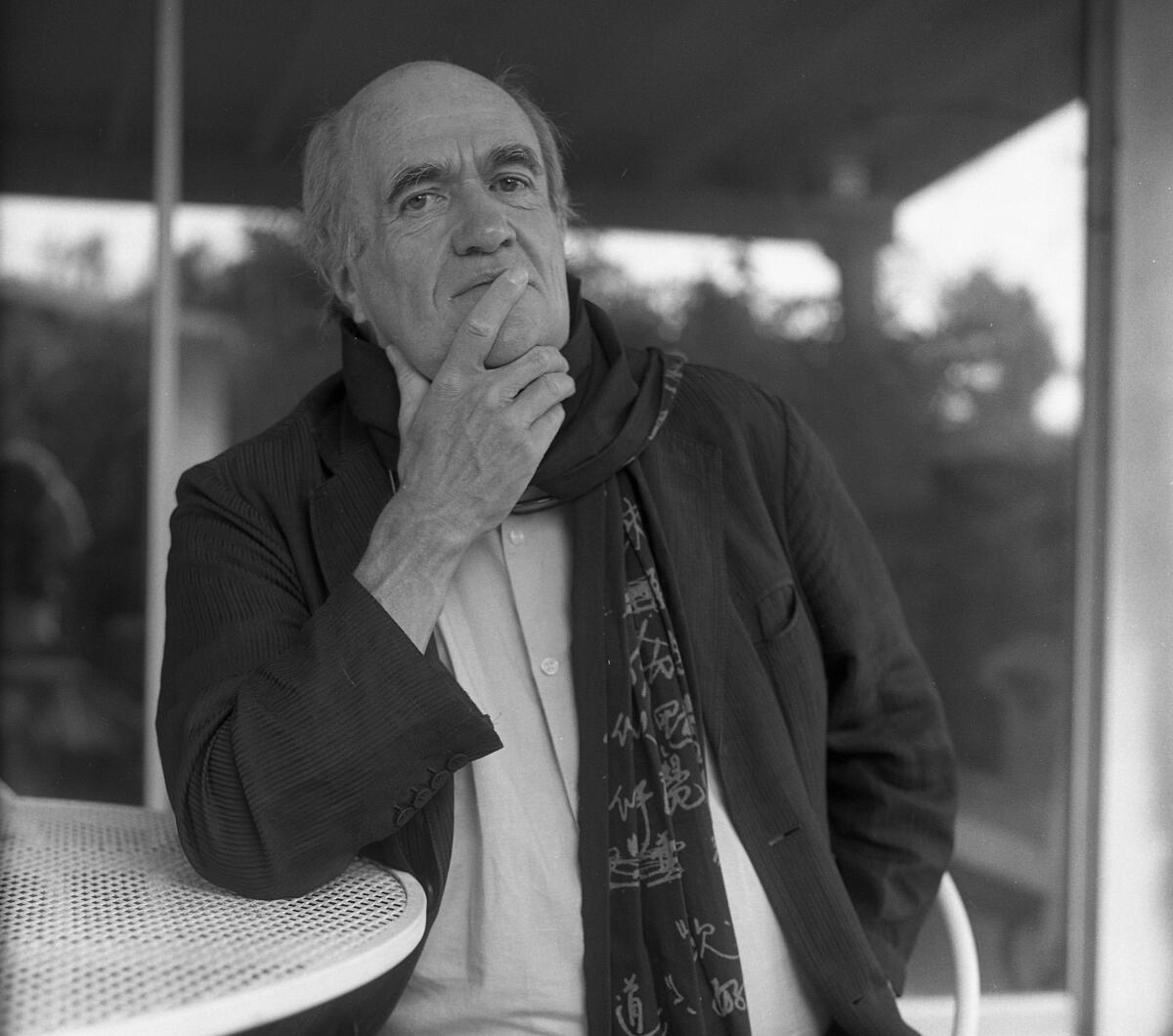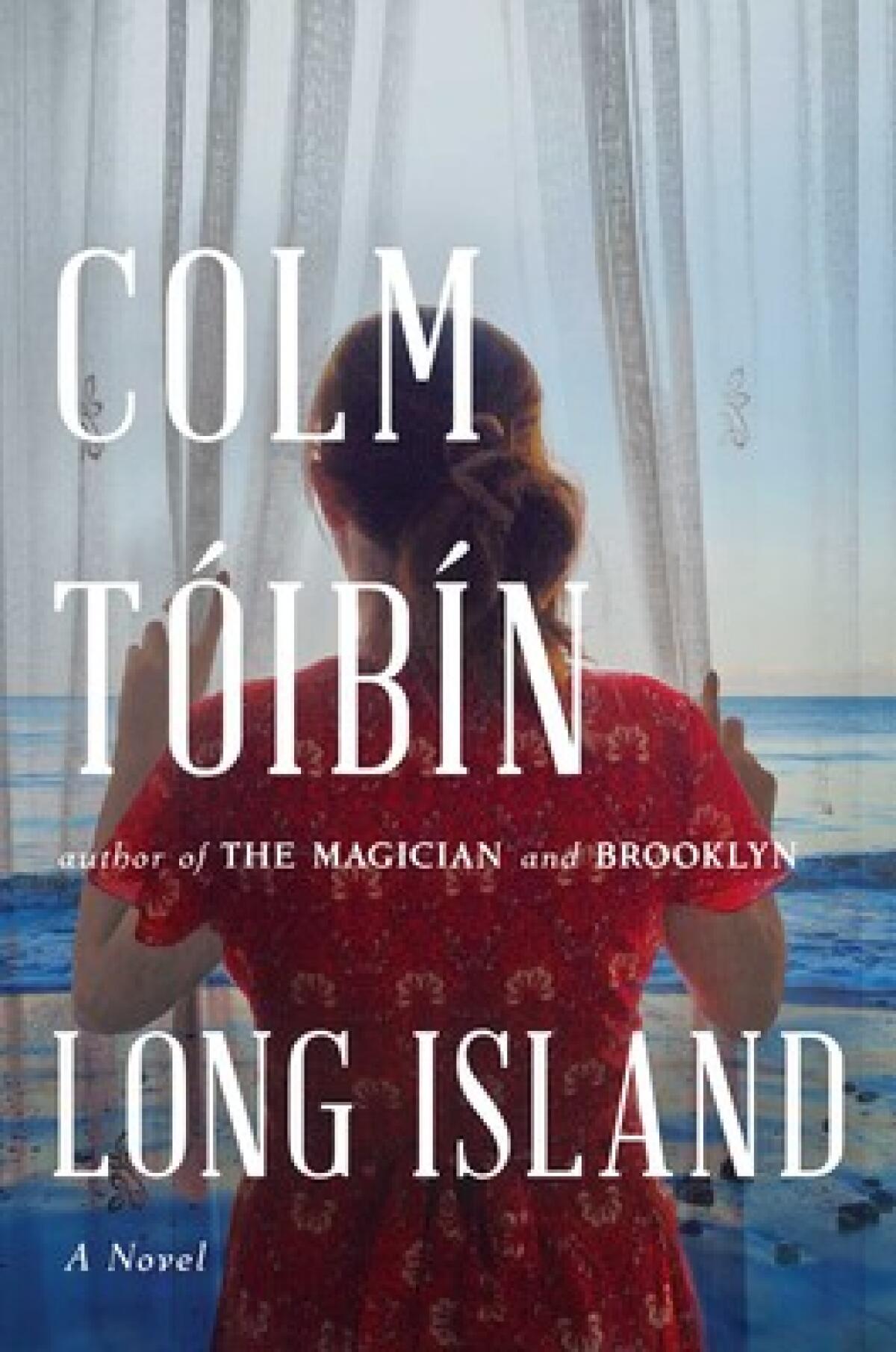Colm TĂłibĂnâs latest tale is bound together by the tension between secrecy and revelation

Book Review
Long Island
By Colm TĂłibĂn
Scribner Book Company: 304 pages, $28
If you buy books linked on our site, The Times may earn a commission from Bookshop.org, whose fees support independent bookstores.
Colm TĂłibĂn is hardly known for âhooks,â but he certainly has one here. The author, whoâs specialized in the novelized lives of repressed literary masters with elaborate prose styles â Henry James in âThe Master,â Thomas Mann in âThe Magicianâ â returns in âLong Islandâ to his other register, the deceptively simpler storytelling of ordinary lives, and to the familiar territory of his enormously popular book, the 2009 novel âBrooklynâ (later made into an equally popular film starring Saoirse Ronan and Domhnall Gleeson).

Ah, that hook. Eilis Fiorello, nĂŠe Lacey, answers the door of her Long Island home to find a stranger who tells her that her husband, Tony, a plumber, âdid a bit more than was in the estimate ⌠and his plumbing is so good that [the manâs wife] is to have a baby in August.â As soon as the child is born, the man says, he will deposit it on the Fiorellosâ doorstep.
The problem, among others, is that Eilis will not have the baby in her house either.
âWhat is plot in a novel?â TĂłibĂn has said. âAn action that has consequences, which must not be predictable.â What makes âLong Islandâ especially rich â and doubly suspenseful â is that, along with the fallout from Tonyâs infidelity, the story is haunted by the consequences of actions taken at the heart-twisting conclusion of âBrooklyn.â
Rachel Khongâs irresistible puzzle of a second novel suggests it is a mistake to think we can force complex, nature-nurture identities in a chosen direction.
You donât have to have read âBrooklynâ to enjoy âLong Island,â but because the new novel revisits the scenes, characters and complications of the earlier one, knowing the first makes reading the second that much more affecting. In âBrooklyn,â having impulsively and secretly married the Italian American Tony, 18-year-old Eilis returns to Ireland upon her sisterâs death and falls for a local barman, Jim Farrell, only to have to go back to Brooklyn, leaving the bewildered Jim, when a gossip discovers her marriage.
It is some 20 years later when the cuckold appears on Eilisâ doorstep, and in the interim she has built what flashbacks suggest is a happy life, living with Tony and their two now-teenage children in an enclave on Long Island, close by Tonyâs brothers and parents. Having made her position on the quandary known to Tony â choose the baby or her â Eilis goes home to Ireland to stay for a while with her 80-year-old mother, a sharp, self-contained woman with definite ideas and a clear grudge against her daughter for leaving her alone all those years ago. In Enniscorthy, Eilis, of course, reencounters Jim, who has recently taken up with her oldest friend, Nancy, five years a widow.
The L.A.-born Pulitzer Prize winner takes on fame and domestic life, with surprising results.
What will Tony do? What about his family, living in each otherâs pockets as they do? Will Eilis and Jim rekindle their romance? If so, what does that mean for Nancy? The tension of not knowing is intense, for the reader as well as the characters, who seem as uncertain as we are about their next moves. The suspense is amplified by the way TĂłibĂn deftly balances the story between the forces of secrecy and revelation. Eilis tells no one, including her mother, about her predicament. Jim and Nancy tell no one about their relationship. Eilisâ mother and daughter are both silent on the pieces of the puzzle that have come into their possession.
Against all this withholding, gossip â never-ending, omnipresent â relentlessly works away. Sometimes itâs deliberate, even malicious, but mostly itâs a matter of all of Enniscorthy, like the Fiorello family in their cul-de-sac on Long Island, living in longtime, complicated juxtaposition to each otherâs lives. They are all in the same story, in a sense that transcends the narrative of a novel. âSure, everyone knows everything,â as one of Eilisâ brothers tells another. Even the withholding of gossip has a place in the plot. âI made a decision early in life not to be a gossip,â Eilisâ mother tells her. âAnd it has always stood to me.â Meanwhile, what she couldâve said might have changed everything.
The characters in âLong Islandâ are constantly cautioning themselves not to say anything, for fear of upsetting that fine balance that exists in intimacy as much as in community. But not saying is an act with consequences, too â one that TĂłibĂn, a master of his art, exploits to exquisite effect at the end, leaving us to wonder, yet again, whatâs next.
Ellen Akins is a freelance editor and the author of five works of fiction.
More to Read
A cure for the common opinion
Get thought-provoking perspectives with our weekly newsletter.
You may occasionally receive promotional content from the Los Angeles Times.












